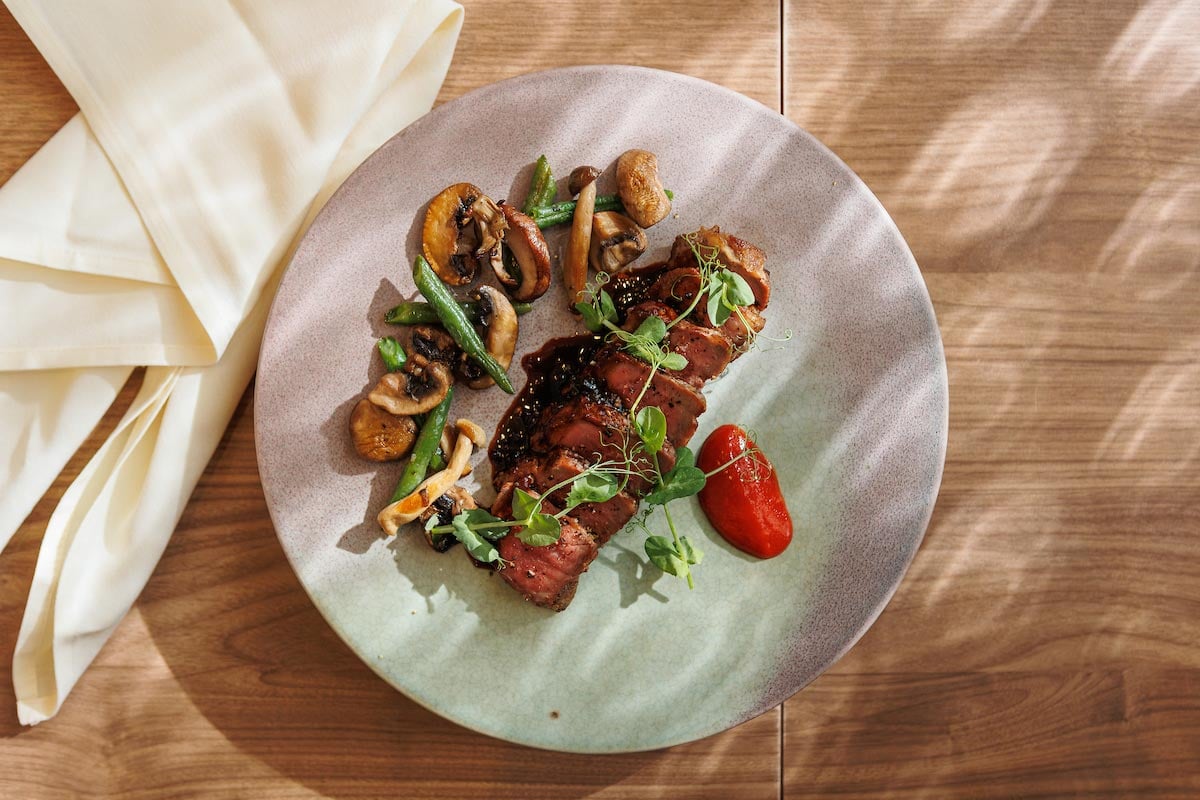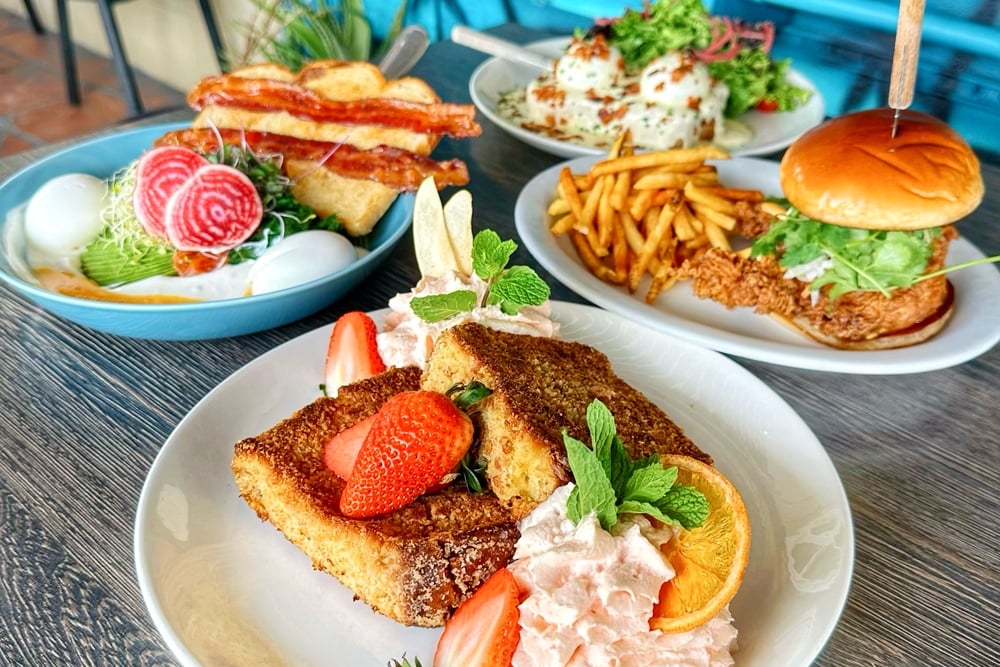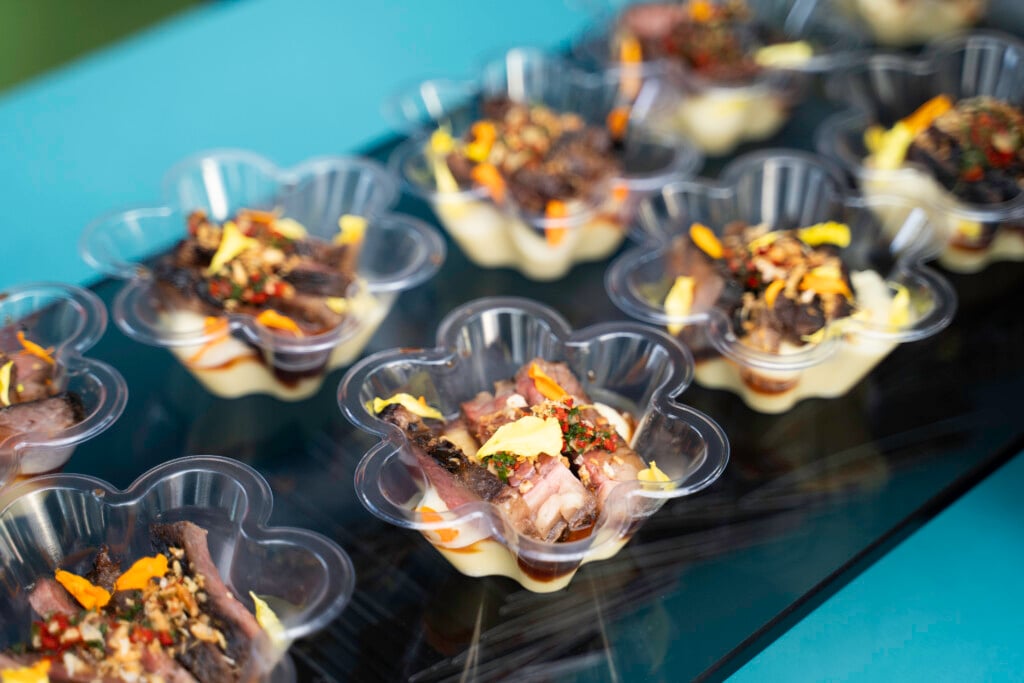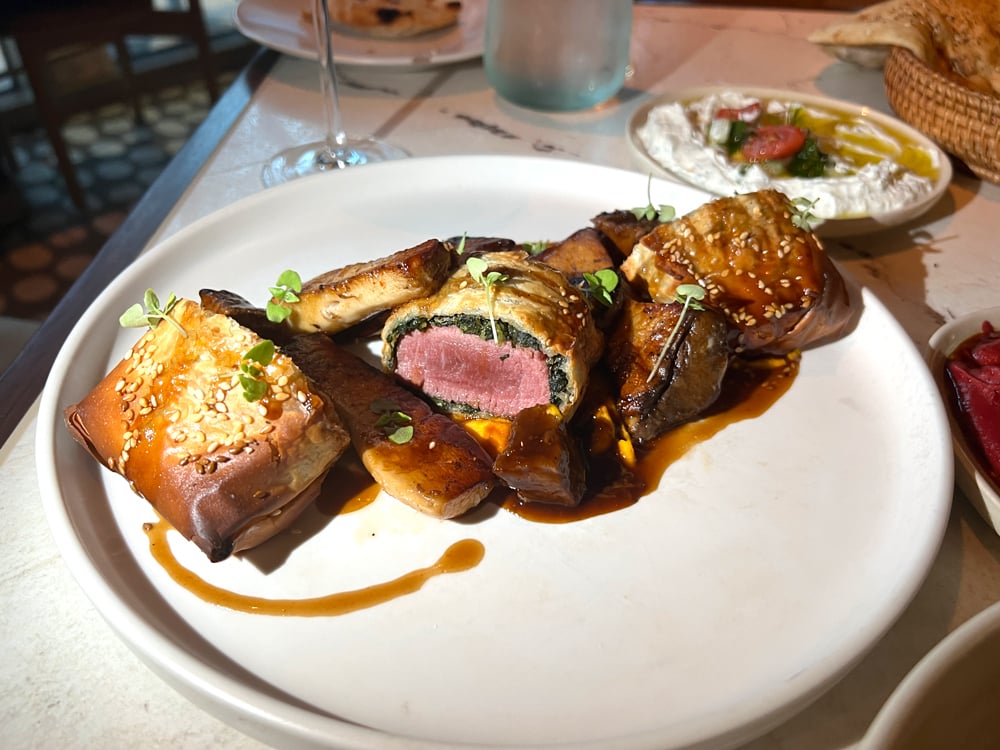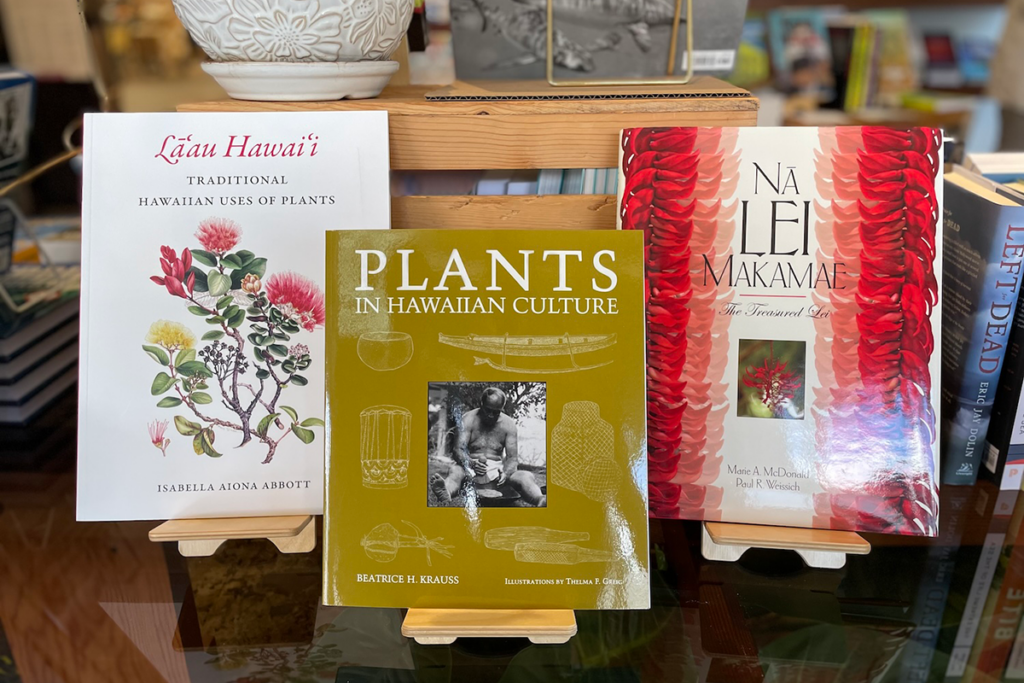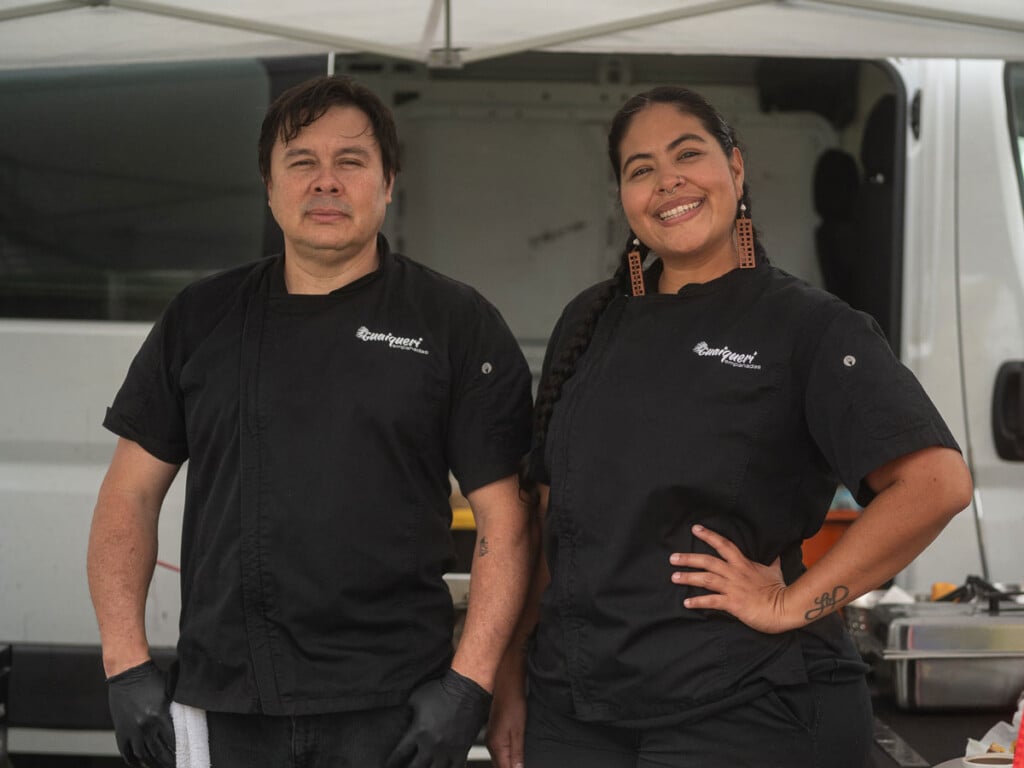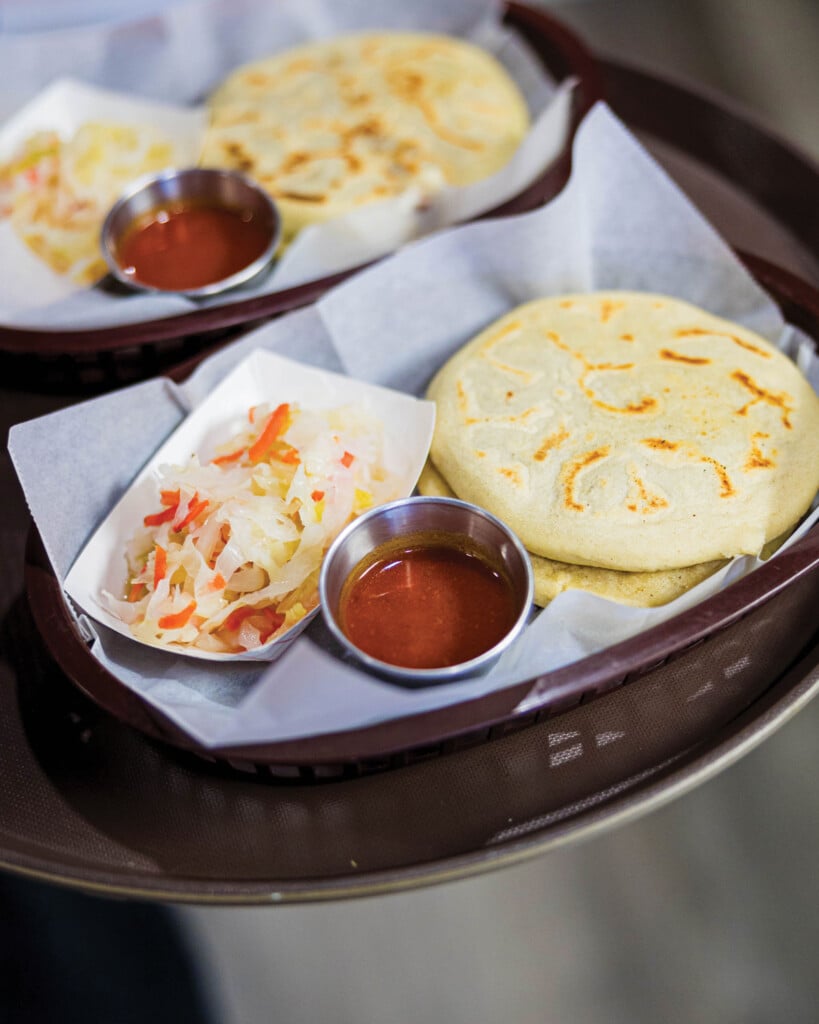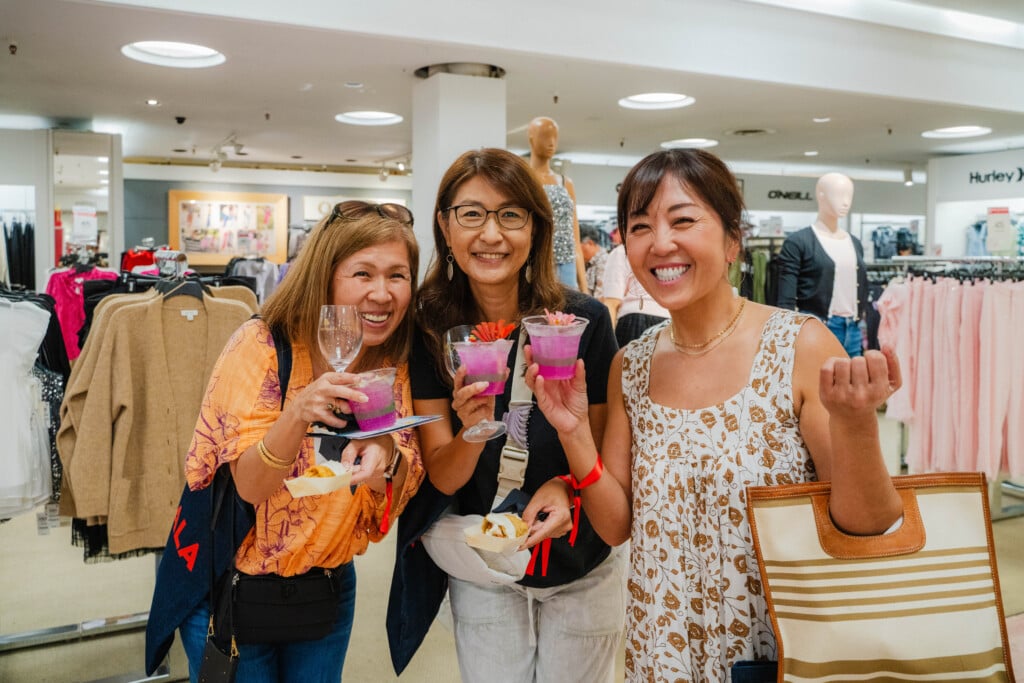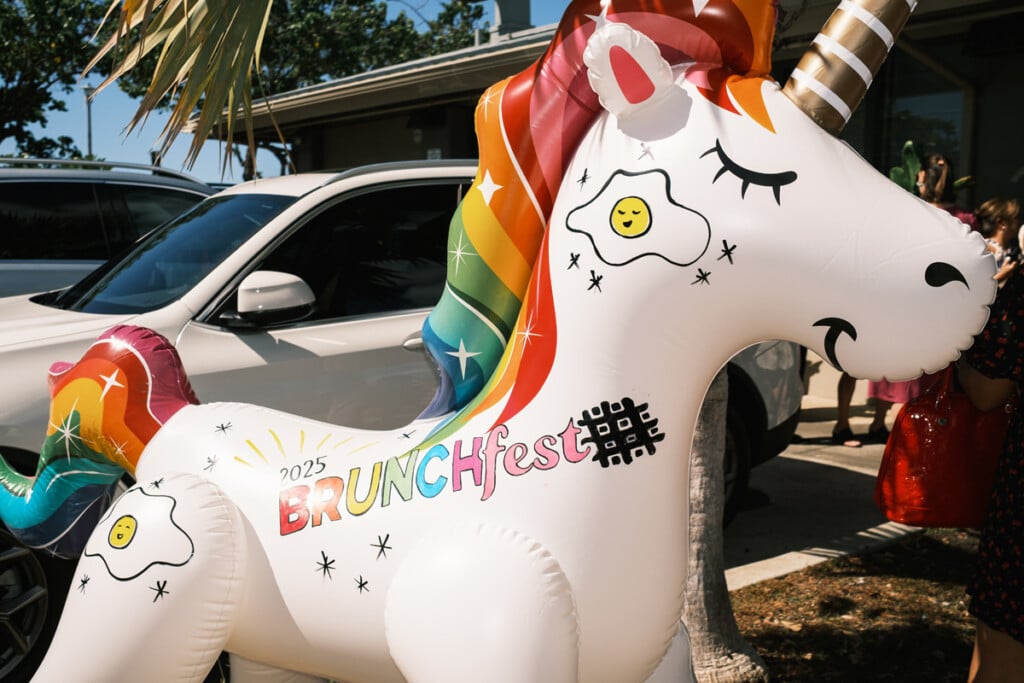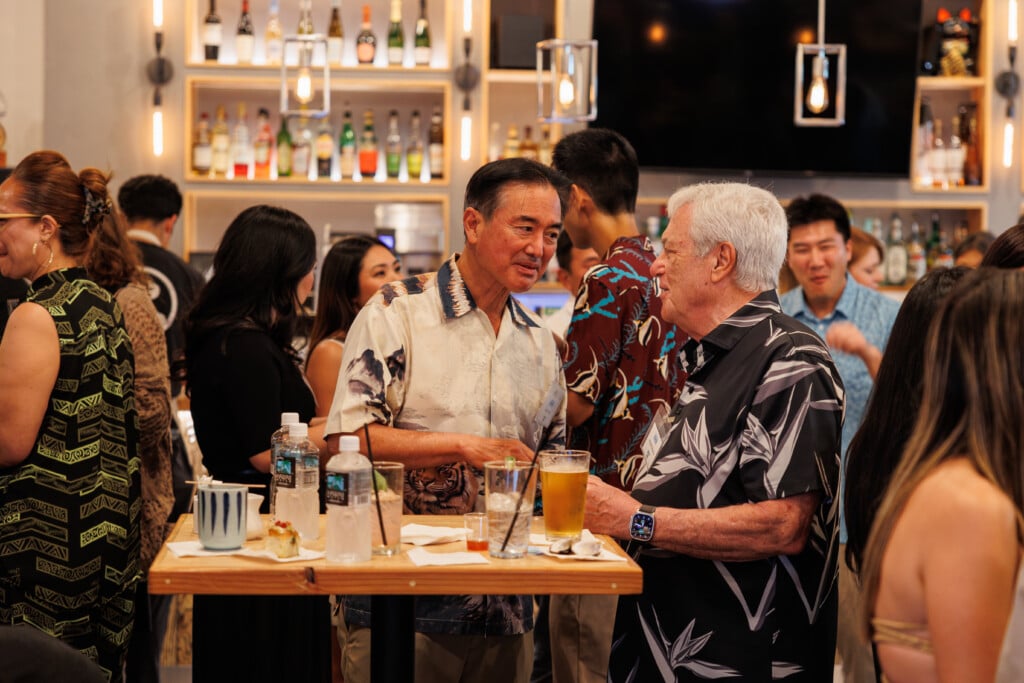Empanadas, Grilled Octopus, Tender Iberico: Why El Cielo Is the Hale ‘Aina Best New Restaurant
HONOLULU editors’ pick for the top restaurant award of 2024 goes to a Spanish nook on Lewers Street.
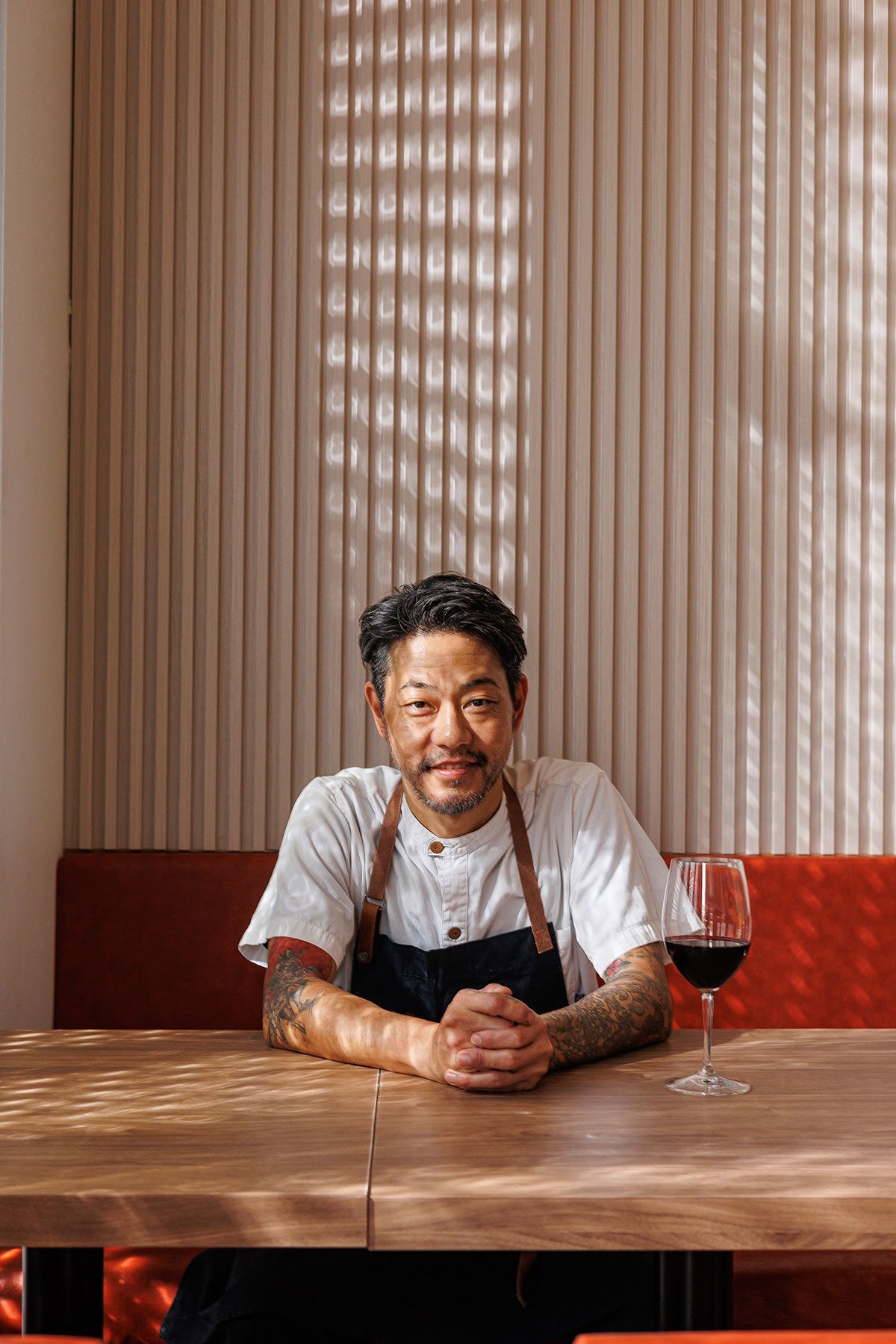
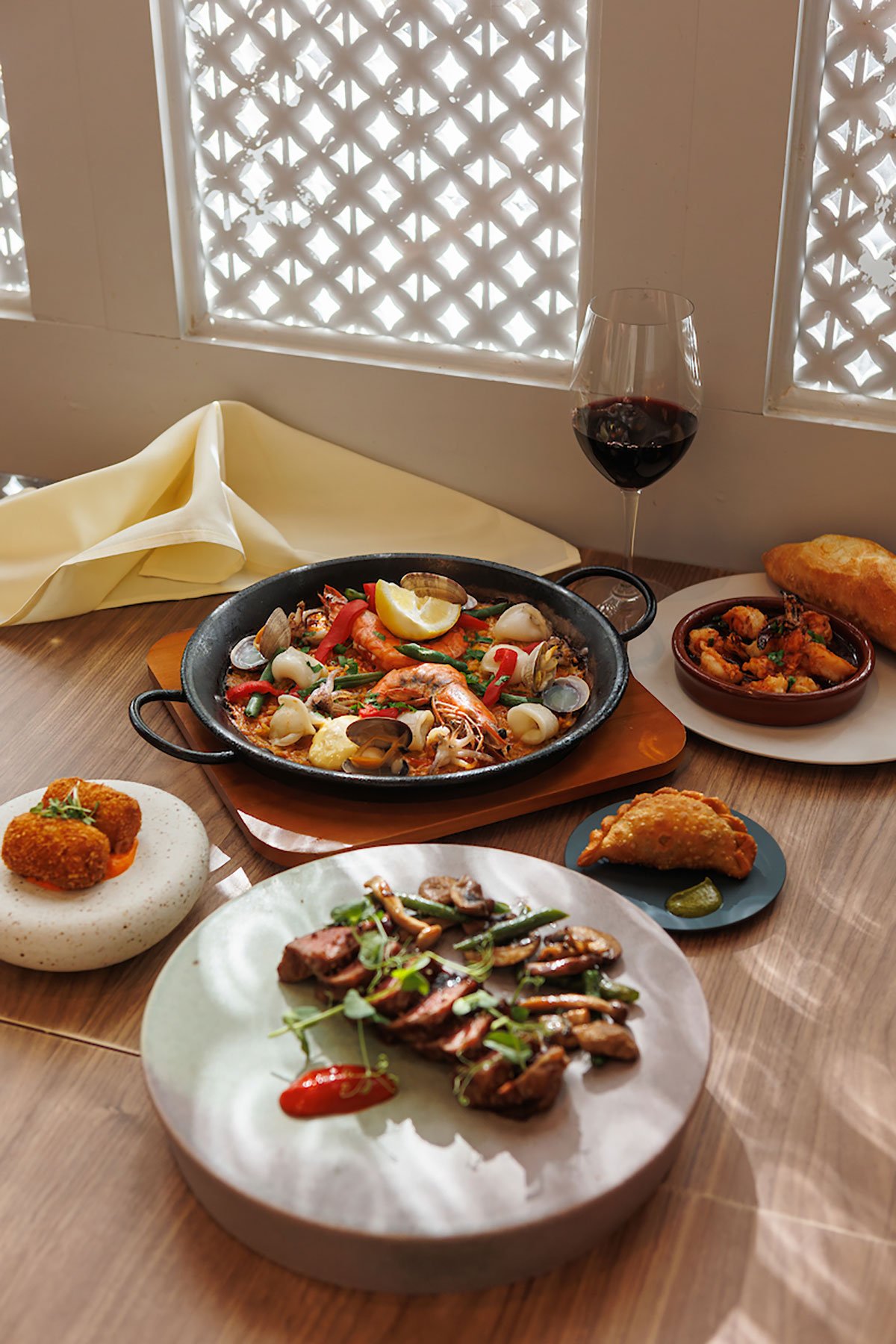
E
El Cielo’s menu mirrors the life of its chef—not unusual among chef-driven restaurants in this city, until you look at the life of Masa Arnaldo Gushiken. The menu is his story—growing up in Argentina, years spent in Italian and French kitchens in Tokyo, then a life-changing connection with the food of Spain, whose language and simpler preparations took him back to the world of his youth. At its heart, El Cielo is Spain through Gushiken’s lens, with classics like paella and croquetas de jamon as well as the more niche (at least in Hawai‘i) callos tripe stew and pintxos with whole anchovies. Tucked in between are nods to Argentina, contemporary Japan and France.
The totality, in an elegantly renovated midcentury walk-up in Waikīkī, makes El Cielo the HONOLULU editors’ pick as the Hale ‘Aina Awards’ Best New Restaurant (our readers named it the finalist).
Gushiken’s food story begins at a turning point. Born in Buenos Aires to parents whose own parents emigrated from Okinawa, he might have continued to adulthood as a Spanish-speaking nisei, except his family moved to Japan when he was 12. It wasn’t smooth. Cut off from his Latin world—“my heart,” he calls it—and unable to express himself, he struggled to learn Japanese and ended up quitting high school. A fear of losing his birth language drew him to Los Angeles, where he washed dishes among other Spanish speakers. When he had worked his way up to chef de cuisine at a casual Japanese eatery, he had enough skills to return to Tokyo. Higher-end training followed, in French and Italian kitchens under Michelin-starred chef Hide Yamamoto. Eventually, Gushiken wound up on the opening team of a Spanish restaurant in Shibuya.
“They sent me to Spain, and it changed everything,” he says. “Everything was good and simple. I went to Barcelona and Galicia and San Sebastian, and I was like, I gotta do this.”
Immersed in a proud Latin food culture, learning from culinary equals in the fluency of his native tongue, everything clicked. Gushiken’s most vivid memory from this time? “The octopus in Galicia,” he says at once. “It’s super simple. You know how octopus is so soft? A lady taught me to cook it. She taught me to put in one wine cork, boil it, turn off the heat, put the lid on, two hours, that’s it. I had tried in Japan—I put octopus in Coca-Cola, I boiled it a long time, but I never got it as soft as Galicia style.”

Twelve years later, when Gushiken opened El Cielo on Lewers Street in the summer of 2023, octopus a la Gallega was on the menu. The years in between had brought him to Honolulu, where he became corporate chef for Diamond Dining and its then-trio of Shokudo, Bread + Butter and Búho Cocina y Cantina. By the time he found an investor and a space—a former boutique with 18-foot ceilings and a Spanish-tile fountain in the courtyard—for his first restaurant, he was 46. He’d had plenty of time to plan a menu.
Which dishes, we asked, would he serve to chef friends? His answers:
1. Croquetas de jamon, $8—“I use jamon de bellota, a more high-end ham” made from free-range pigs that ate acorns, and cured for longer than jamon Iberico. “It’s more rich, with a lot of flavor.”
2. Seafood paella with Kaua‘i shrimp, $38—“I use the shrimp heads to make the broth.”
3. Octopus a la Gallega, $22—“Sometimes in Spain, it’s chilled. Grilling adds flavor (after boiling), and I mix sweet and smoked paprika together” to sprinkle on top.

4. Empanada, $7—“It’s my mom’s recipe. Always when I eat empanadas, I think of my mom.”
5. Shrimp ajillo, $21—“A lot of places, ajillo is just garlic and oil. I use the same Kaua‘i shrimp head sauce as for the seafood paella.”

6. Iberico pork shoulder, $48—“Everybody’s scared to eat pork medium-rare, but it’s the best. In some places in Spain, they cook it almost rare. There’s a technique: After searing, keep it warm, sear again and keep it warm. It’s low-temperature cooking.”
7. House-made baguette—“This one, every day I make”—to go with the chicken liver pâté and shrimp ajillo.
Not mentioned but notable are Gushiken’s mother’s chimichurri, which nestles in the curve of the tender, smoky octopus tentacle. The same chimichurri accompanies the gentle beef empanada with paprika and raisins, and his washugyu steak, a nod to Argentinian kitchen workers he met at steakhouses in Galicia. Uni pasta, a staple of every Japanese-owned Italian restaurant, is on the menu because Gushiken’s wife, who’s from Japan, insisted (it’s a top seller). Marinated mushrooms, chilled with a vinegar tang, is a recipe he created at a French restaurant years ago.
Our favorite at El Cielo is the pork shoulder, which wraps porky grill flavor around a juicy, yielding core. And not on any chef’s list but a favorite nonetheless: fries with Serrano ham shavings and a fried egg. You break the yolk and let everything go. Which is a good way to start.
